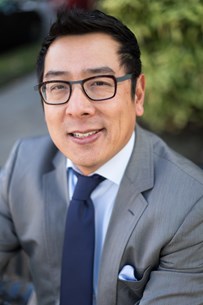Meeting
2013 Genitourinary Cancers Symposium

University of Washington and Seattle Cancer Care Alliance, Seattle, WA
Evan Y. Yu , Kevin F Kuo , Rachel Hunter-Merrill , Roman Gulati , Heather H. Cheng , Jason Frederick Flamiatos , Teresa E Gambol , Suzanne P Hall , Celestia S. Higano
Background: Exisulind is an apoptotic drug shown in vitro to inhibit expression and function of the androgen receptor. At lower doses as a single agent and in combination with chemotherapy it has demonstrated limited efficacy. In this pilot study, the potential for high dose exisulind to prolong the duration of the off treatment interval of IAD was studied. Methods: Eligible patients (pts) underwent prior definitive local therapy, had BCR, and received at least one full prior cycle of IAD, defined as a 9-month on- and variable off-treatment period (terminated by reaching PSA threshold 1 ng/mL for radical prostatectomy and 4 ng/mL for radiation). Exisulind (250 mg po bid) was started 3 months before completing the 2nd on-treatment period and continued through the 2nd off treatment interval and other IAD cycles until castration resistance (CRPC). We used a Cox proportional hazards model to estimate the association between receiving exisulind and time to resuming AD for pts who initiated exisulind during their 2nd on-treatment period. The model controlled for 1st off-treatment duration. Results: Nineteen pts were enrolled and treated with exisulind. Median age was 62 (range 50-75) years. Median PSA at diagnosis was 11 (3.9-99) ng/mL and 5 (1-19.2) ng/mL at initiation of IAD. Median Gleason score was 8 (6-9). Median duration of exisulind treatment was 1.5 (0.5-7.7) yrs and median follow-up was 9.3 (1.1-10.1) yrs. In 9 evaluable pts, taking exisulind was associated with a non-significant prolongation of the off treatment interval (15% decreased risk of progressing to PSA threshold and the next AD cycle, HR 0.85, 95% CI 0.41, 1.75, p=0.654). Six pts (32%) required at least one dose hold, 9 (47%) underwent a dose reduction for toxicity, and 7 (37%) came off trial for drug toxicity. Most common adverse events were elevated liver function tests (53%) and fatigue (42%). Median time to CRPC was 5.5 (0.3-not reached) yrs. Conclusions: High-dose exisulind was poorly tolerated and did not clearly extend the duration of 2nd off-treatment intervals compared to the 1st. More potent contemporary agents may be more beneficial in this setting. Clinical trial information: NCT00283803.
Disclaimer
This material on this page is ©2024 American Society of Clinical Oncology, all rights reserved. Licensing available upon request. For more information, please contact licensing@asco.org
2013 Genitourinary Cancers Symposium
Poster Session
General Poster Session B: Prostate, Penile, Urethral, and Testicular Cancer, and Urothelial Carcinoma
Urothelial Carcinoma,Prostate Cancer,Penile, Urethral, and Testicular Cancer
Prostate Cancer
NCT00283803
J Clin Oncol 31, 2013 (suppl 6; abstr 209)
10.1200/jco.2013.31.6_suppl.209
209
C15
Abstract Disclosures
2023 ASCO Genitourinary Cancers Symposium
First Author: Sophia C. Kamran
2024 ASCO Genitourinary Cancers Symposium
First Author: Zin Myint
2023 ASCO Annual Meeting
First Author: Daniel Eidelberg Spratt
2023 ASCO Genitourinary Cancers Symposium
First Author: Tony Felefly